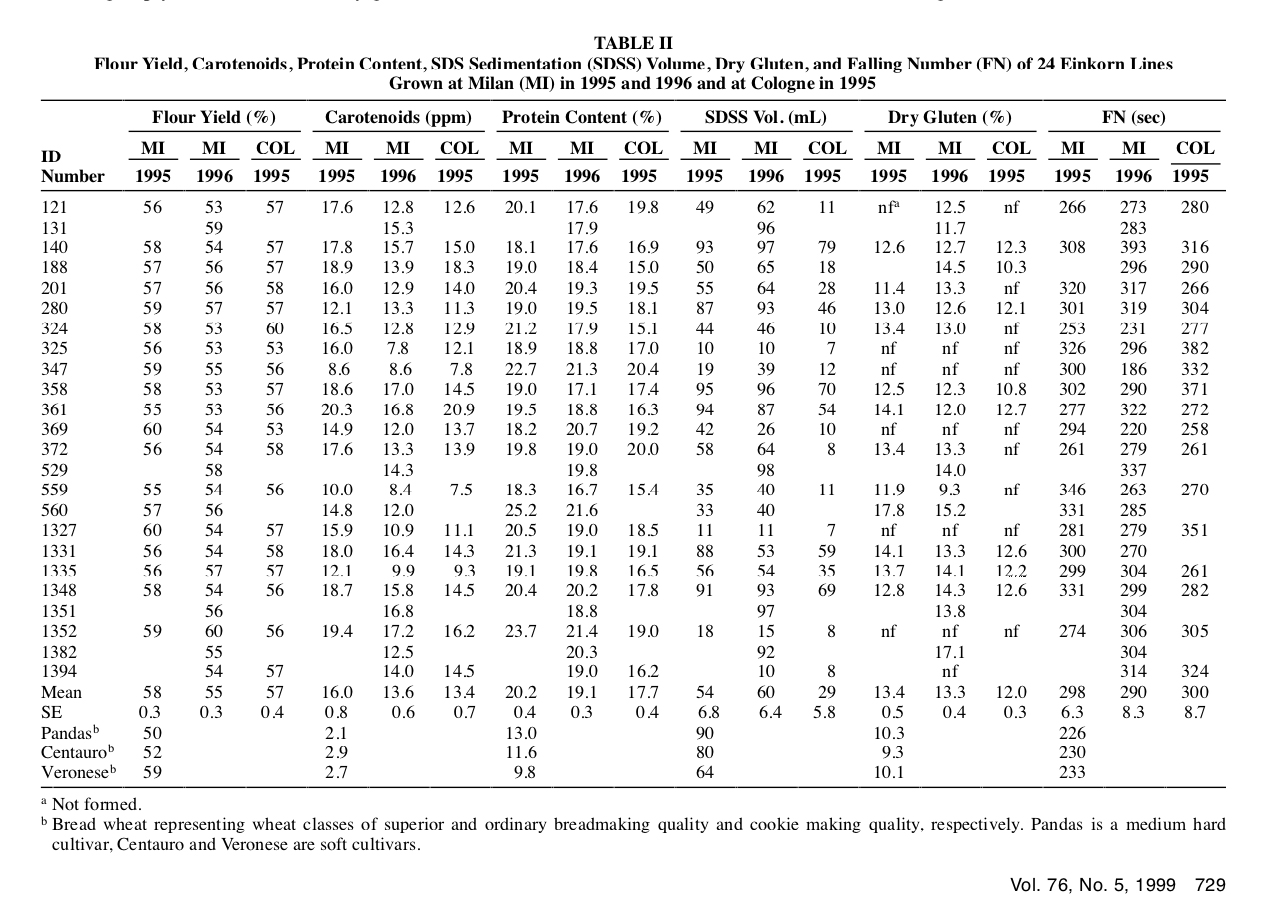Un importante studio che evidenzia le interessanti caratteristiche delle antiche varietà di grano in relazione, soprattutto, ad alcune diffuse patologie gastrointestinali (This manuscript reviews the nutritional value and health benefits of ancient wheats varieties, providing a summary of all in vitro, ex vivo, animal and human studies that have thus far been published.)
Premessa:
Antiche varietà di grano. Sebbene non esista una definizione precisa, è generalmente accettato che il grano antico sia rimasto invariato negli ultimi cento anni. Al contrario, le specie moderne sono state ampiamente modificate e soggette a incroci in quella che viene comunemente definita la “rivoluzione verde”. Questo termine è stato sviluppato per riferirsi a una serie di iniziative di ricerca e trasferimento tecnologico avvenute tra gli anni ’30 e la fine degli anni ’60. La rivoluzione verde fu iniziata da Strampelli, che fu tra i primi, in Europa e nel mondo, ad applicare sistematicamente le leggi di Mendel a caratteristiche come la resistenza alla ruggine, la fioritura precoce e la maturità e la lunghezza dello stelo. Di conseguenza, la produzione di grano italiano è raddoppiata, un risultato che durante il regime fascista è stato definito la “Battaglia del grano” (1925-1940) [10]. Dopo la Seconda Guerra Mondiale, alcune delle varietà di grano di Strampelli furono usate come genitori nei programmi di riproduzione in molti paesi in una fase della Rivoluzione Verde, definita come la rivoluzione verde di Norman Borlaug. Questa fase è stata determinante nello sviluppo delle varietà ad alto rendimento [10]. Successivamente, durante gli anni ’60, la ricerca si concentrò sul miglioramento della qualità delle proteine di riserva, aumentando così le proprietà tecnologiche. Agronomi coltivavano varietà di mais, grano e riso che venivano generalmente indicati come “varietà ad alto rendimento” basate su una maggiore capacità di assorbimento dell’azoto rispetto ad altre varietà. Alti livelli di azoto nei terreni causano l’allettamento del grano prima del raccolto. Pertanto, i geni semi-nani sono stati allevati per migliorare per ridurre sia l’allettamento che il ciclo di maturazione. I principali risultati di questa rivoluzione sono stati lo sviluppo di varietà moderne caratterizzate da una maggiore resa, una ridotta suscettibilità alle malattie e agli insetti, una maggiore tolleranza agli stress ambientali, una maturazione omogenea (per ottimizzare la raccolta) e un contenuto di glutine più elevato (per migliorare qualità del pane e della pasta). Mentre questi programmi di coltura intensivi hanno contribuito ad aumentare la produzione e la qualità tecnologica, si è verificata una concomitante diminuzione della variabilità genetica e un progressivo impoverimento delle proprietà nutrizionali e nutraceutiche del grano, determinate principalmente dalla completa sostituzione delle antiche razze locali con la moderna varietà “.
Alcuni passaggi dello studio aiutano a focalizzare le evidenze più significative che, sebbene, riferite ad un limitato numero di ricerche, aprono interessanti prospettive per una maggiore utilizzazione dei grani antichi al fine di diminuire i disturbi derivanti dall’ingestione del glutine:
About monococcum wheat: “Compared with soft wheat, einkorn showed a lower content of both total and resistant starch (mean value: 655 vs 685 g/kg dry matter (DM) and 25.6 vs 30–88 g/kg DM respectively) [7]. However, the amount of amylose molecules, that are digested more slowly, was higher than the amount of amylopectin molecules, thereby lowering both glucose and insulin levels in the blood after meals [14] and maintaining satiety for longer periods [15]. By evaluating the average protein content, einkorn protein values were 59% higher than those of modern wheat [16], but the bread-manufacturing quality of storage proteins were poor, making it better suited to the preparation of cookies or pasta [17]. The comparative analysis of lipids and fatty acid composition in einkorn and soft wheat germ revealed a higher content of lipids (+50%) in einkorn, with a greater proportion of monounsat- urated fatty acids (+53%), and lower polyunsaturated (−8%) and saturated fatty acids (−21%) [16]. With respect to phytochemicals, einkorn showed the highest concentration of phytosterols and tocols (1054 and 57 μg/g DM respectively), but this difference was mostly marked in the HEALTHGRAIN dataset [12]. In addition, einkorn, khorasan wheat and emmer wheat cultivars showed the highest content of total carotenoids (2.26, 6.65 and 8.23 μg/g DM respectively) and lutein (7.28, 4.9 and 2.7 μg/g DM), the major carotenoid with respect to all the other species [18,19]. Of interest, several lines of einkorn showed lutein values from three to eight-fold higher than soft wheat and two-fold greater than those for durum wheat. Some authors suggested that the higher carotenoid content in einkorn-made products could be a result of lower processing losses, linked to lower lipoxygenase activity [7]. “
“Although there is insufficient evidence to suggest that ancient wheat varieties prevent gluten-related disorders, several studies have shown that a diet based on less-immunoreactive wheat products, with fewer amounts and types of reactive prolamins and fructans, may help in the improvement of gastrointestinal and/or systemic symptoms of some auto-immune or chronic diseases (eg, irritable bowel syndrome, etc.) [34]. These less-immunoreactive varieties, like einkorn, may be good targets for slowing the development of disease in populations genetically predis posed to celiac disease and other wheat sensitivities [42]. “
“On the other hand, a subsequent paper investigating how in vitro gastro-intestinal digestion affects the immune toxic properties of gliadin from einkorn (compared to modern wheat), demonstrated that gliadin proteins of einkorn are sufficiently different from those of modern wheat, thereby determining a lower immune toxicity following in vitro simulation of human digestion [40]. “
“Although concrete functional benefits are difficult to ascertain from random individual human trials, since they are subject to differences and/or limitations in experimental design, participant number and participant characteristics in the case of parallel arm studies, results unanimously suggest that the consumption of products made with ancient wheat varieties ameliorate not only proinflammatory/antioxidant parameters (where investigated) but also glycaemic and lipid status. “ Ancient wheat species and human health: Biochemical and clinical implications. Stefano Benedettelli et altri. September 2017. (Available online at www.sciencedirect.com)
Approfondimenti
Antiche varietà di grano e salute umana: implicazioni biochimiche e cliniche



